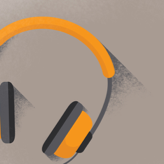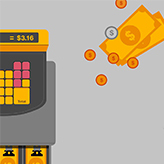Earn Your Future® Digital Classroom Curriculum Connectors
Curriculum Connectors tie critical math, language arts, and social studies skills to the Earn Your Future Digital Classroom experience for grades 3–12. Explore the Curriculum Connectors for engaging, ready-to-use activities and assignments that align with core subject areas to help prepare students for future financial success. The Earn Your Future Digital Classroom incorporates a holistic, interdisciplinary approach to build strong student understanding of financial literacy to help pave the way for a financially successful generation.

Connect the Digital Classroom curriculum to your classroom:
To see how the modules can adapt to your classroom, first select a grade level then a subject area.
To change results select one item from each category.
Currently viewing Grade Level 2 modules with the Math subject area. Refine your results by using the filters above.

Level 2 | Module 1
Mortgage Mystery
Home Buying
Subject: Math
One home, three interested buyers — and three different mortgage payments. Investigate this mortgage mystery.

Level 2 | Module 2
Truth or Dare?
Risk Management &
Insurance
Subject: Math
Are you a risk taker? Explore this module to find out.

Level 2 | Module 3
Can I Afford a Phone?
Planning & Money
Management
Subject: Math
If you were challenged to save up for something you really wanted, where would you begin?

Level 2 | Module 4
Too Good to Be True?
Saving and Investing
Subject: Math
Have you ever heard the phrase, "You better shop around?" Here's your chance to learn why.

Level 2 | Module 5
What's Your Interest?
Saving and Investing
Subject: Math
Picture yourself in 20 years. How much money will you have saved? Meet three teens who have discovered the secret to saving.

Level 2 | Module 6
Mission to Konfido
Financial responsibility &
decision making
Subject: Math
Can you earn enough Fuel Points to reach the planet of Konfido and be granted permission to land?

Level 2 | Module 7
#Link2YourFuture
Income & Careers
Subject: Math
Are you ready to #Link2YourFuture?

Level 2 | Module 8
Questioning College
Paying for College
Subject: Math
Meet Bella and learn along with her about education and career options.

Level 2 | Module 9
Where Does the Government Get Its Money?
Taxes
Subject: Math
Make connections between different services provided by the government and taxes people pay.